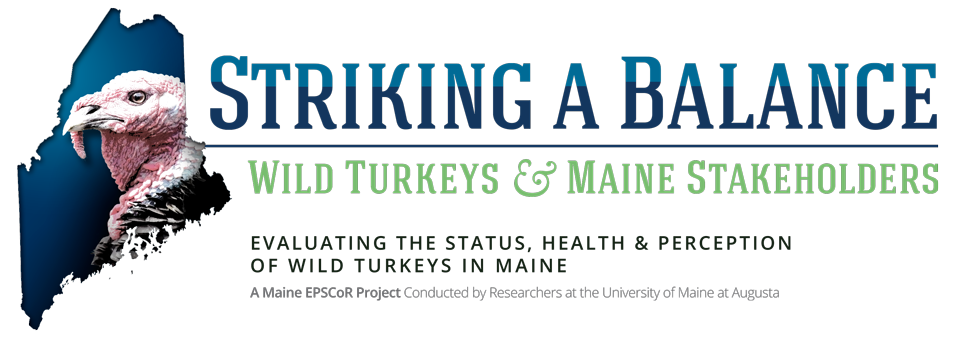Acceptance Capacity of Wild Turkeys:
First Steps
In late March the first of an expanded number of stakeholder groups was surveyed by Kate Turcotte and an undergraduate research assistant. Individuals self-identifying as regularly participating in activities such as hunting, fishing, wildlife observation, and/or other recreational pursuits were asked to respond to a series of questions on perceived risk, acceptance capacity, and attitudes vis-à-vis wild turkeys in the state of Maine. Questions asked individuals to subjectively rate the importance of wild turkeys (and wildlife more generally) in the state, the responsibility of landowners to provide and manage wildlife habitats, and the nature of their contact with wild turkeys. Additionally, a series of questions asked individuals to categorize turkey-related experiences and attitudes, as well as the way respondents feel wild turkey populations should best be managed, if at all. Results will be integrated with existing data (from agricultural stakeholders) and data from additional stakeholder groups to provide a nuanced picture of overall acceptance capacity.
The total sample size from this recreation/sport hunter stakeholder group was 47, with 80 percent of respondents over age 35. Ninety-three percent of respondents stated that they have lived in the state for fifteen years or more, making the sample relatively representative of the older, geographically stable population characteristic of Maine. Some questions include:
- What is the greatest number of turkeys observed in the local area at one time?
- Do respondents belong to or otherwise support any environmental or conservation organization(s)?
- In the last five years, has the number of turkeys viewed increased or decreased?
Results from this stakeholder group indicate a perception among most that the number of wild turkeys present in the state has increased dramatically within the vast five years (Figure 1). The species contributes to a feeling of being closer to nature among most, although concern about the sustainability of current turkey populations is reported (Figure 2). Individuals also state that they would prefer to see a decrease or no change in the number of turkeys they view in their local area (Figure 3).
